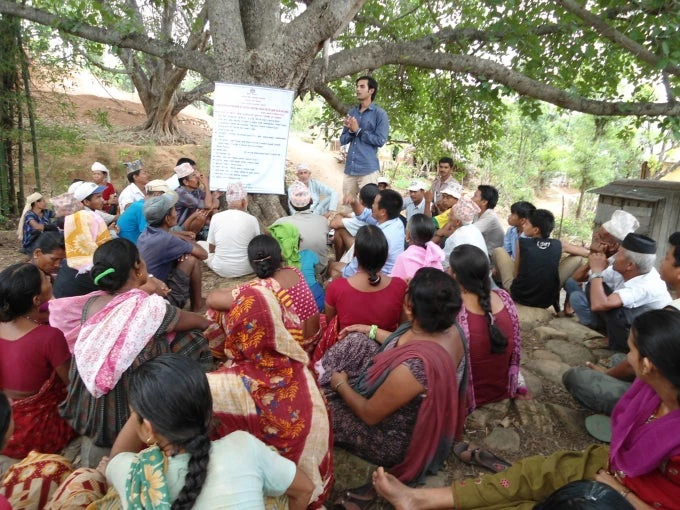
Most villages in Nepal, immersed in beauty, also struggle with poverty, lack of basic infrastructure and weak service delivery. Then there are those which have been additionally affected by the April/May 2015 earthquakes where nearly 9,000 people lost their lives, more than 22,000 people were injured and more than 500,000 houses collapsed or were damaged.
While the decentralization process in Nepal has a long history, in recent years the amount of public resources spent at the village level steadily increased to reach Rs. 23 Billion (approx. US$ 217 Million*) in 2014 (out of Rs. 450 Billion – approx. US$ 4.2 Billion - of the government budget). These resources are mainly targeted at local investments, social security entitlements and school support programs. Have villages really benefitted from this increase in public spending? Do we know if the substantial amounts committed by donors (over $4 Billion) for post-earthquakes reconstruction will be efficiently spent and in a transparent fashion once they reach villages?
It is difficult to know sitting in Kathmandu. Nepal has made impressive progress in the last three to four years in terms of efficiency and transparency; in the use of public funds with the improvement of key cash management systems (single account, information systems); as well as the increased professionalism of the Office of the Auditor General (OAG). But these reforms have yet to reach the village level. Tracking of collection of public resources and public expenditures stop short of villages, at the district level and are not reported to citizens or to higher levels of government. The OAG still does not have the mandate to conduct audits at this level, even if according to the new Constitution, this should happen soon. There is a serious accountability gap at the village level.

Since 2010, the Program for Accountability in Nepal (PRAN) is working in 15 districts to bridge this accountability gap. The programs goal is to ensure public resources are indeed allocated to needs expressed by villagers, that the use of these resources are monitored by beneficiaries and reported to Treasury at the district level. During a visit to various villages in Tansen-Palpa with the PRAN team and colleagues from DFID (contributors to the Public Financial Management MDTF) I was able to discuss with village development committee (VDC) secretaries, CSOs, social mobilizers and citizens and collect stories about how through social accountability mechanisms, citizens were able to receive the subsidies they were entitled. We discussed how to select their priority investments, monitor their implementation and input the financial data into the financial management information system (FMIS) maintained by district Treasury control offices (DTCO). Citizen monitoring and reporting of village expenditures and grievance redress mechanisms have provided demonstrable improvements in the life of Nepal villagers.
Of course, these successes are still partial and provisional. In the absence of local elections, informal political influence continues to introduce interferences in the system. VDC secretaries are too often struggling with capacity issues while their responsibilities are increasing. The issue of sustainability and mainstreaming of these often creative experiments in government’s systems is a topic for debate. This debate is even more acute when a lot of these villages have to reconstruct homes, monuments and public buildings now that reconstruction is starting for good in Nepal and will have an immediate impact for citizens. Reconstruction will also be a test for the new Republic. The results already achieved during the first phase of implementation of the GoN Public Finance Management PFM reform strategy with the support of the PFM MDTF in terms of efficient programming and use of public funds as well as citizen involvement to bridge the gap at the local level, could be brought together in support of the successful and transparent reconstruction efforts that the country and its citizens need.
*Conversion rate at the time of publication


Join the Conversation